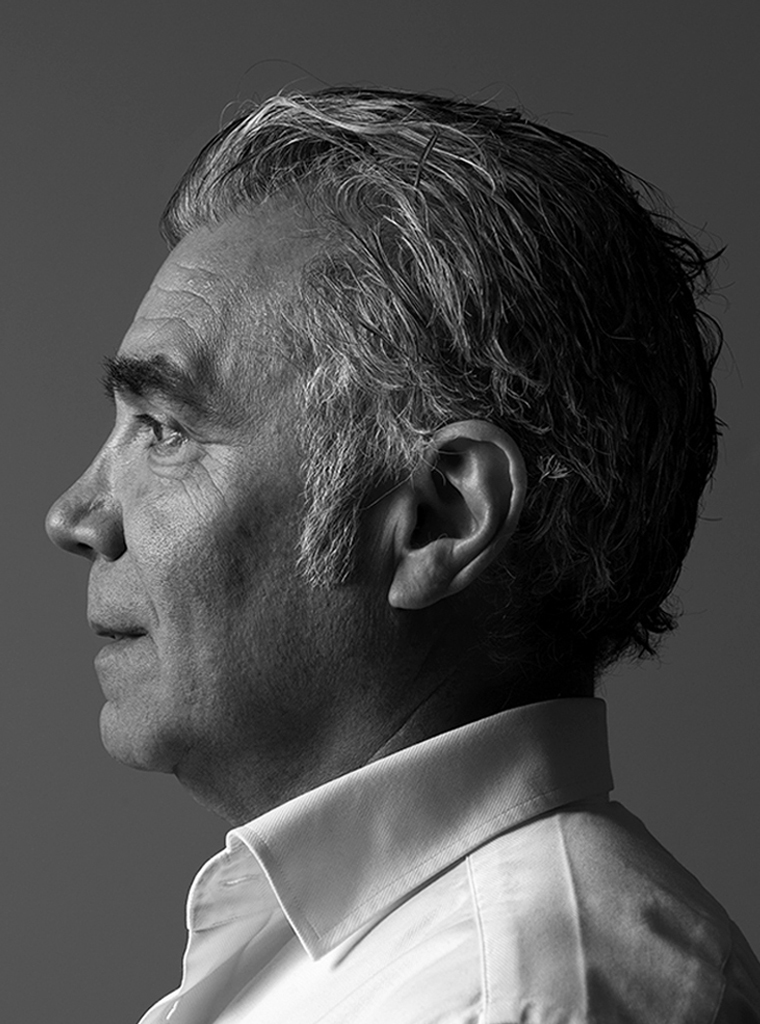Travelling is in Eugene Bay’s blood. His father worked for the diplomatic service of Great Britain in various capitals all over the world. Until his eleventh year, Eugene lived successively in Turkey, Italy, India and Singapore. He then went to boarding school at Rodbourne College, near Newport Pagnell in England. At school he developed a great interest in history, geography and literature, especially the works of Shakespeare.
The many foreign trips to visit his parents during the school holidays made him fall in love with flying. Unfortunately, like many graphic designers, Eugene is dyslexic and his dream of becoming a pilot was not fulfilled. (Much later he finally did take flying lessons in Lelystad with his first solo flight being in Florida.)
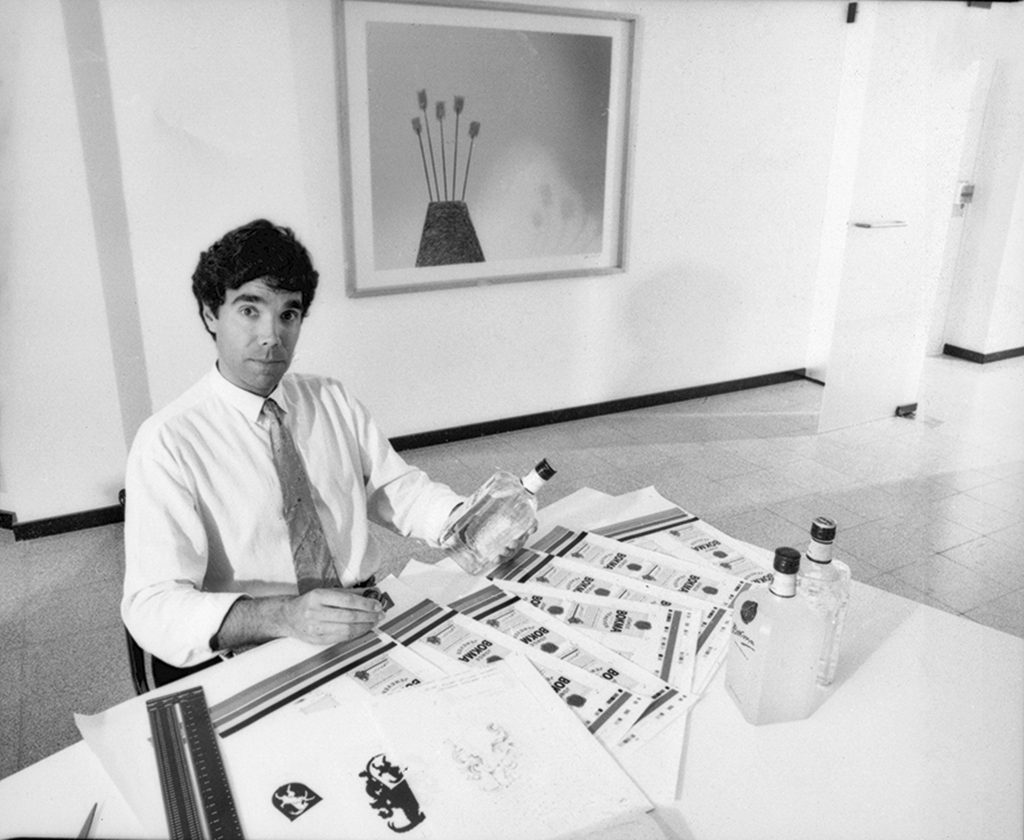
At the age of sixteen, Rodbourne College went bankrupt and Eugene’s mother decided to settle in England to take care of her children herself. This was ‘not done’ at the time, but his mother had a strong will and didn’t care too much for British conventions. Eugene missed boarding school. Being the eldest of five children, he found living with the whole family quite difficult. Then, one day out of the blue, a dear school friend suggested that he should become an architect or a designer. This idea changed Eugene’s life.
He was ‘awakened’, according to himself, by a special teacher in ‘art class’ in High Wycombe Art College. In his foundation year he learnt, among other things, model drawing, printing techniques, binding, etching, photography, screen printing and graphic design. From the start, graphic design was his passion. After his entrance examination at the well-known LCP (London College of Printing – now London College of Communication) he learnt the basics of his profession.
After graduating from the LCP in 1974, he got a job as a designer at Avon Cosmetics in South Kensington, London where he worked for a year. He then worked as a designer at Carl Ally, a respected advertising agency. Next he went to work for the design agency HSAG. Unfortunately, he found it unexciting. In his opinion the agency was dry and soulless.
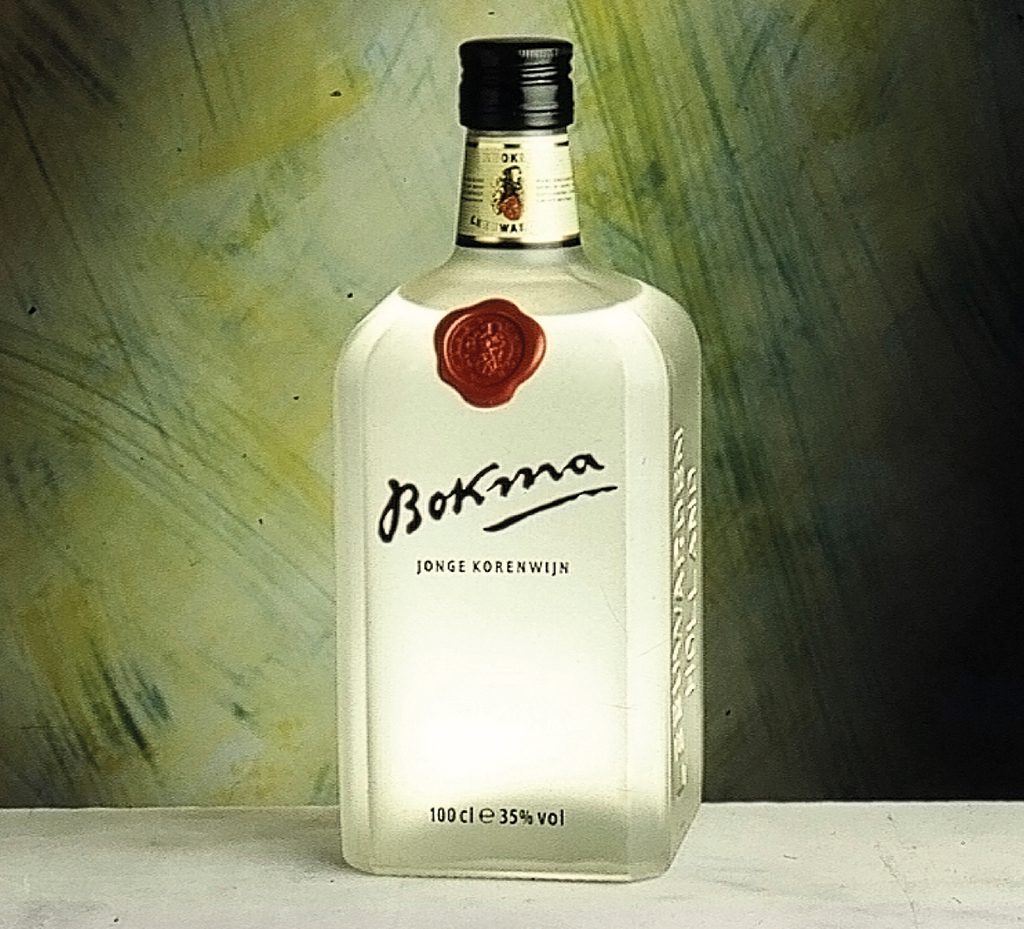
Eugene’s career in the design world really started at Michael Peters and Partners. This agency specialised in packaging design and identity building. There he learnt how to deal with clients and the ins and outs of branding.
Eugene Bay Graphic Design
In 1977, while in London, he was approached, completely unexpected, by a head-hunter for a position with Cliff Barrow at JWT, on the Wibautstraat in Amsterdam. He took the post and worked there for a year and a half. The Dutch language was a challenge in the beginning, but his colleagues supported him enormously. However, this kind of work was not what he was exactly looking for. As an international network advertising agency, Eugene felt that JWT missed a connection with the Dutch design world. It was here that Eugene met his life partner Matthieu Sosef.
After various detours via agencies in England and the Netherlands, Eugene decided to proceed as a self-employed designer: Eugene Bay Graphic Design. His office was on the dining room of his house at the Bezuidenhout, The Hague. Having no clients, Eugene decided to cold call companies by telephone. In 1980, then 28 years old, he called Brand Bier in Wijlre and to his surprise he was invited to visit the brewery in South Limburg for an interview. At that time, especially for an Englishman, a trip to far-away Limburg was a massive undertaking. It did however result in a big assignment for him. To this day Brand Bier is still an important client of VBAT. Shortly after, Eugene Bay Graphic Design, moved to the Vondelstraat in Amsterdam.
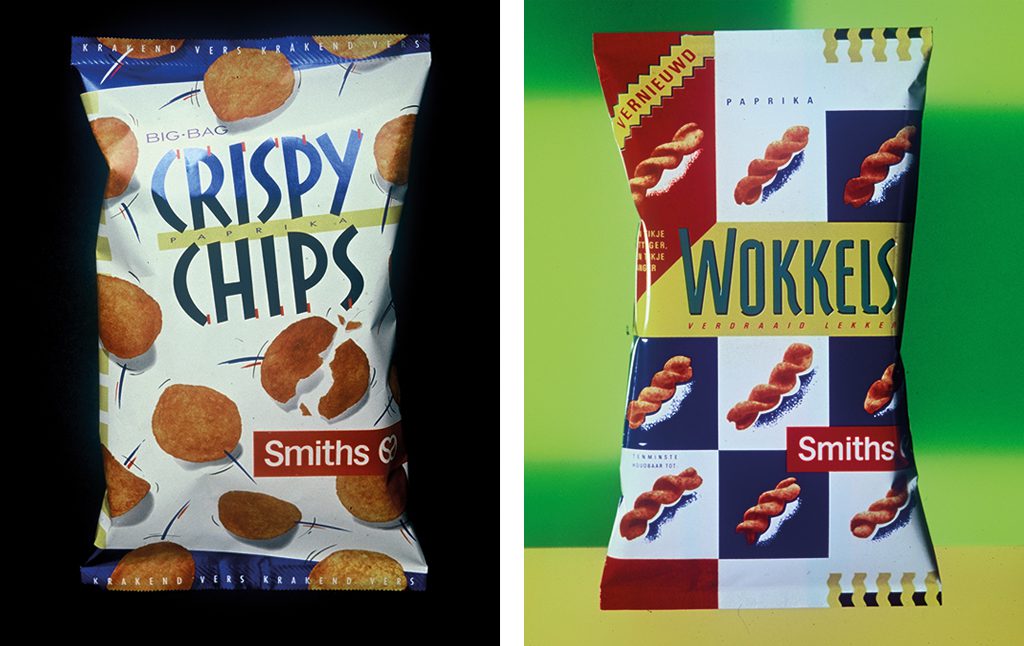
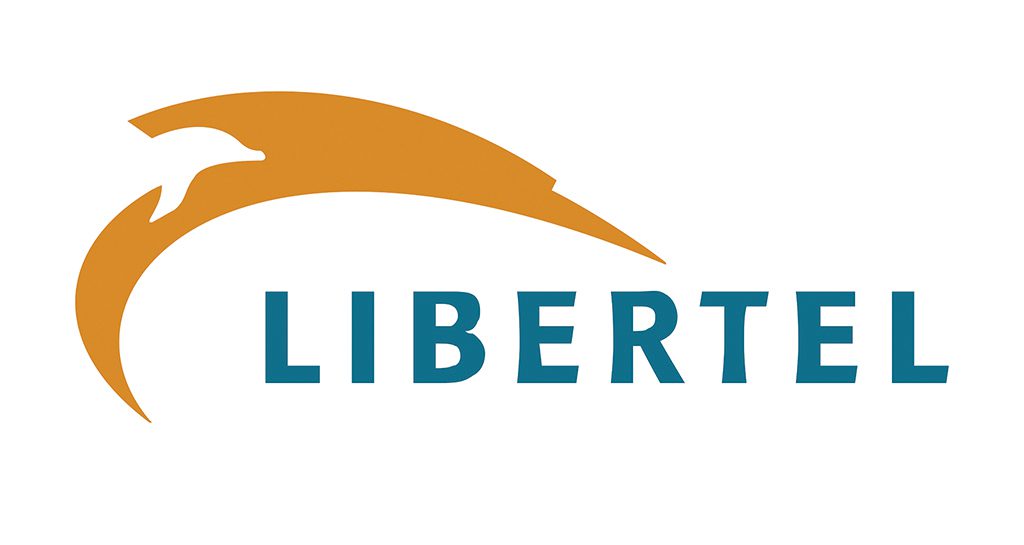
In 1981, another great challenge came along for Eugene: the design of a new Dutch water brand with accompanying water bottle packaging. Eugene had always been a big fan of the artist David Hockney. With almost naive conviction he asked Hockney’s agent if David was interested to make an illustration for the label. To Eugene’s surprise Hockney agreed. Unfortunately, shortly afterwards Eugene heard that the assignment was not real. It had simply been a test assignment from design agency Ten Cate Bergmans, who went on to offer Eugene a job.
The opportunity to work with David Hockney never repeated itself, but Eugene did proceed to work at Ten Cate Bergmans in Bussum. Joep Bergmans, the creative director of the agency, was seen by many as one of the founders of packaging design in the Netherlands. Ten Cate Bergmans worked for various major brands, such as the Rijkspostspaarbank (later Postbank), Bokma, Coebergh, Hoppe, Zwarte Kip, Mona and Smiths Chips. The bureau also worked a lot with PMSvW, the agency of creative stars Jim Prins, Bela Stamenkovits and Hans van Walbeek.
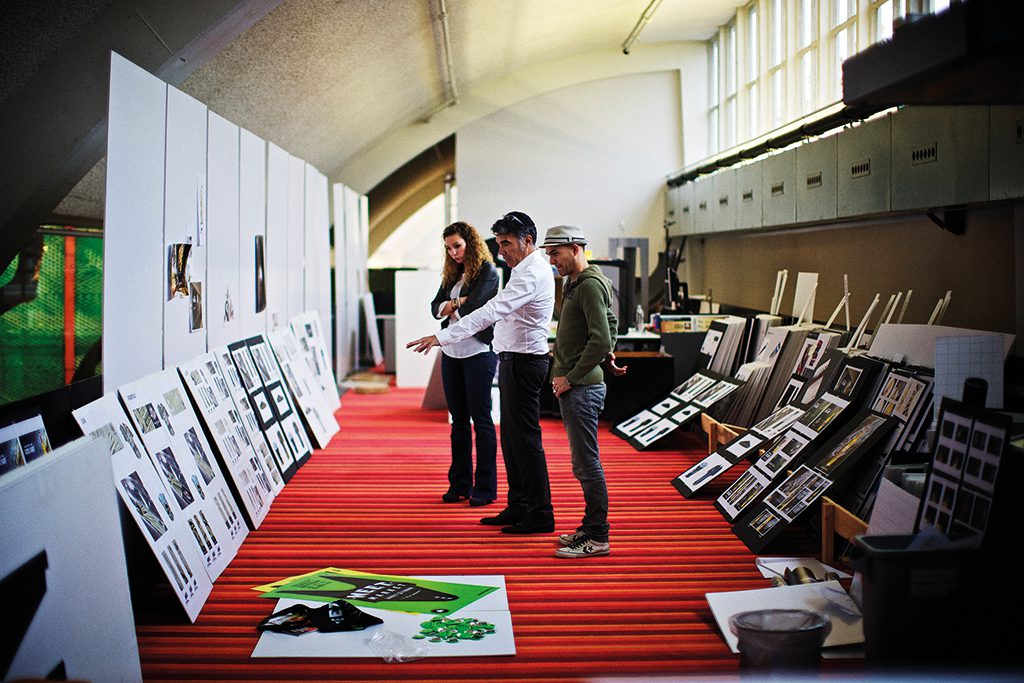

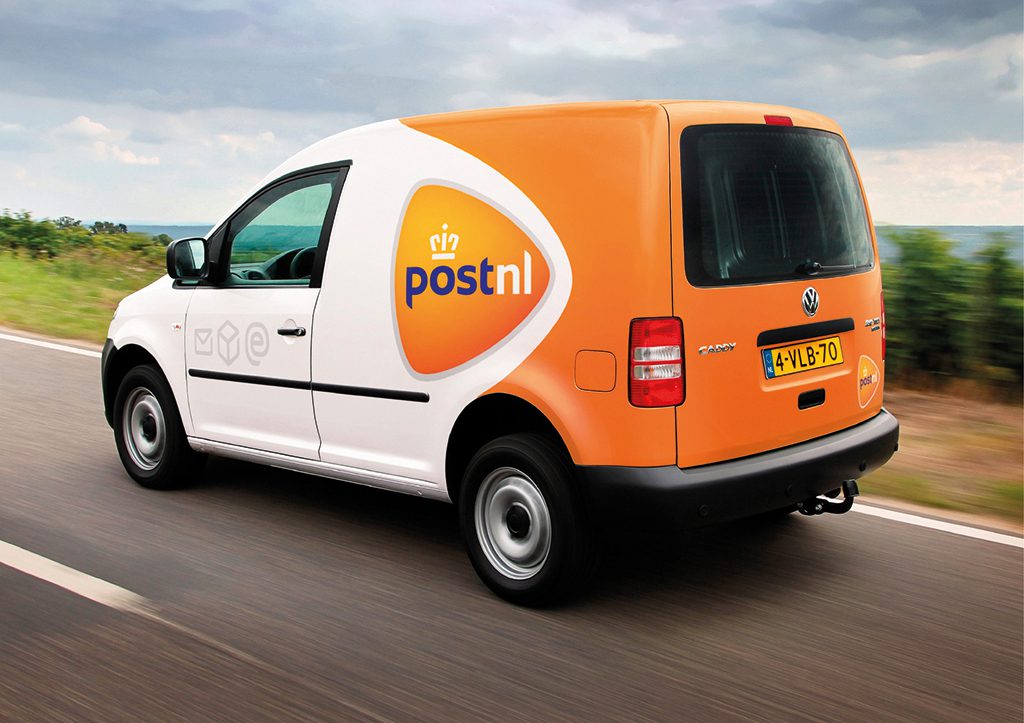
Visser Bay Anders Toscani
Two years later, in 1983, Stamenkovits asked Eugene if he would like to start his own agency with three others. This was the start of what would later be called VBAT. Doc Visser, Eugene Bay, Teun Anders and Polly van Raam started under the name Visser Bay Anders van Raam. Van Raam left soon after the founding and Jan Toscani, ex-Bijenkorf, took her place. They found that the name Toscani added flair so Visser Bay Anders Toscani was launched in 1987. From that moment on the name became VBAT, they were based in Buitenveldert, Amsterdam.
VBAT received a lot of interest in a relative short period of time and over the years won many prizes, including ADCN lamps, Red Dot Awards and Pentawards. The most prestigious, was winning the very first ever Cannes Gold Design Lion in 2008 for Amstel Pulse. These numerous creative awards proved to Eugene and his partners at VBAT, that their way of working was the right one and that top creativity and commercial branding did not have to be each other’s enemies. We now take this for granted, but that was not the case at the time. Commercial design was even frowned upon by some in the Dutch design community.

In addition to their strength in creativity and design, VBAT’s approach was refreshing. As a sparring partner in design, VBAT has managed to retain many clients for a long time. Some business relations have lasted for 35 years and have grown into strong friendships. Eugene’s English, service-oriented nature and upbringing created an ideal balance with the direct manner in which the Dutch challenge briefings and the respectful guidance of clients to follow new paths. All in all, this helped VBAT become one of the largest design agencies in the Netherlands.
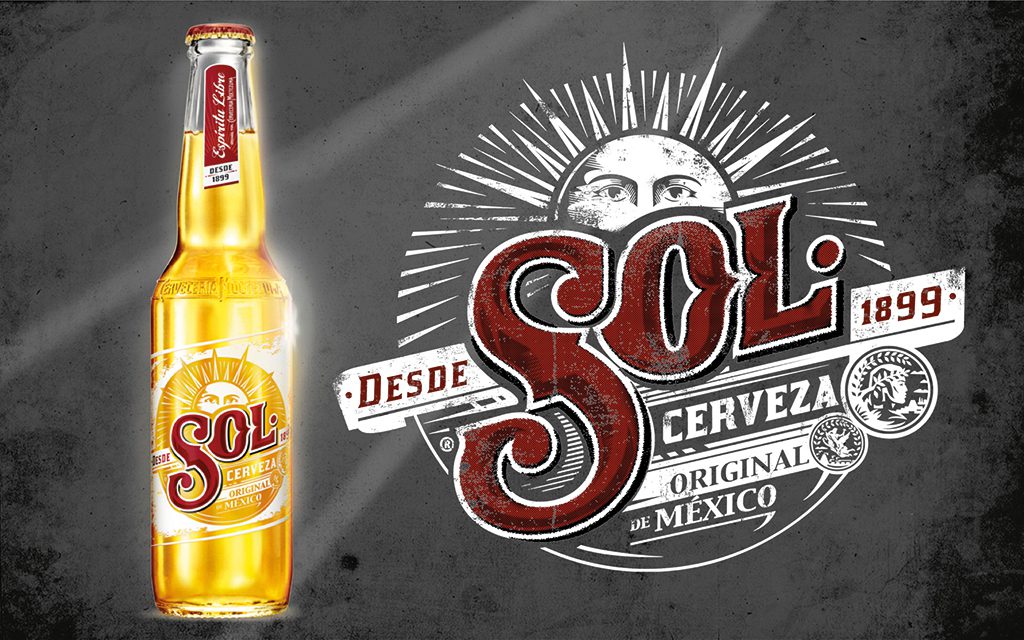
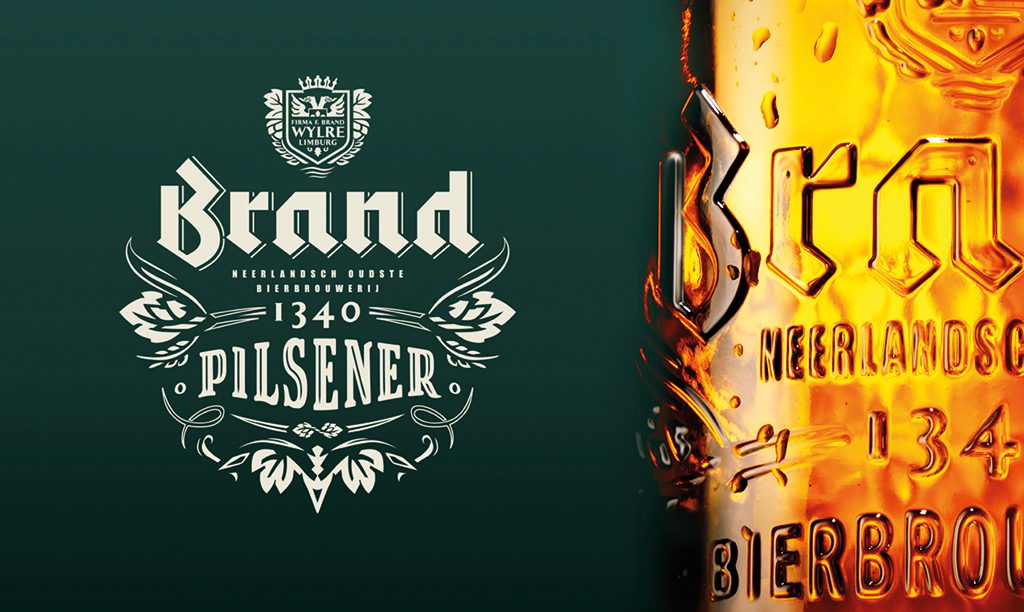
Pioneering Dutch design
When the then GVN (Graphic Designers in the Netherlands), of which only individual designers could become members, became the bNO (professional association of Dutch Designers), a number of agencies joined. VBAT was among the first agency members of the bNO, alongside Keja Donia and Millford van den Berg.
These were turbulent times. Many of the newly-appointed members were seen by the more traditional agencies as covert advertising agencies. This discussion between ‘commercial’ agencies and more ‘aesthetically’ oriented agencies – still raises it’s head today – but is less an issue for younger designers.
When Guus Ros started looking for a successor to his role as General Chairman of the bNO in mid-1990s, he immediately thought of Eugene. This was a unexpected choice for the established order. Why should a foreigner become the head of a Dutch association? Eugene was approached, after much thought, he soon agreed to the position. He remained in the role until 1995.
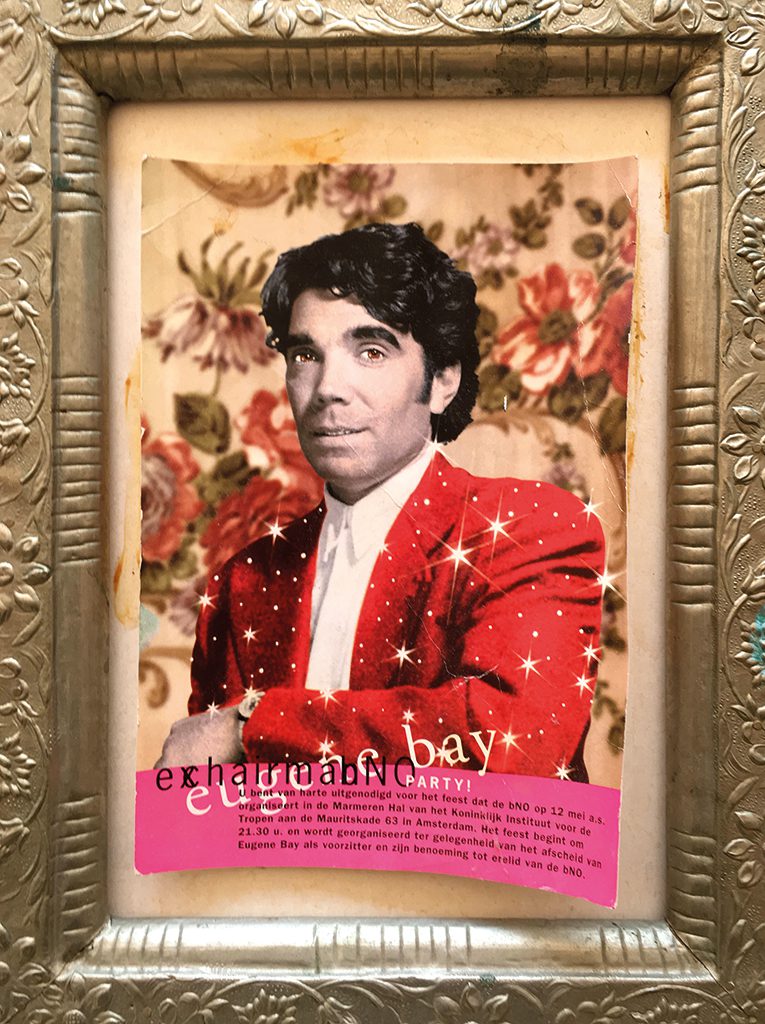
Eugene was so impressed by the trust that the association had in him that he decided to apply for the Dutch nationality. He finally got this in 1993 after a very comical admission interview in the Amsterdam City Hall, and according to himself, a loud singing of the Dutch traditional birthday song ‘Lang zal ze leven’!
Eugene was an extremely committed and skilful chairman from the start.
Every Monday morning Eugene and Rob Huisman, director of the bNO, met for a breakfast meeting at the American Hotel in Amsterdam. They discussed all matters of importance. One important focal point was to agree what action to take to rebalance the role of ‘commercial’ design within the bNO.
The recognition of the effectivity of design services by the business community was well established. But was not reflected by the public news media. They highlighted design only when used in an aesthetic manner. The new bNO wanted to alter this imbalance. Making design, in the Netherlands, appreciated for both its strengths not just one.
The creation of the Packaging Agencies Platform within the bNO (later named Creating Brands) was an important step to give this part of the design world more visibility. Other more commercial services and products in the field of design started to received positive attention from that moment on. Eugene played an important role in this. He was able to give presentations like no other about the importance of effective design for companies and institutions.
The bNO was a member of Icograda, the global organization of graphic designers. And also the BEDA (federation of design associations within Europe). It was clear to the bNO, that BEDA was the most important organisation on which to focus. For the industry, there was a lot to win on an European level. After all, the most important political developments took place in Brussels. The bNO became a very active member of BEDA. So much so, that the BEDA organization considered to moving it’s headquarters to Amsterdam. Eugene was even asked to become chairman of BEDA. In the end, he took the difficult decision not to accept this challenge. In addition to the chairmanship of the bNO, running VBAT remained his top priority.
PANL
In 1995, during the annual bNO general members meeting, held in Amsterdam’s Tropenmuseum, Eugene stood down after 5 years as Chairman. He was awarded an honorary membership of the bNO.
But, Eugene was not done yet. Soon after, he was asked to become chairman of PANL, the association of applied photography in the Netherlands, he could not refuse. Here also he carried out his role energetically for five more years. During his chairmanship, PANL found a new dynamic. Professional photography was under increasing pressure due to the explosive growth of social media photography. PANL played an important role in building a new self-assurance among it’s members. In 2010, at the end of his term as chairman, Eugene was appointed an honorary member of PANL.
In 2007, Eugene was made part of the Hall of Fame of the ADCN (Art Directors Club Netherlands). As the ADCN highlighted, he and VBAT had contributed greatly to the professional integrity and creative flair in the design and communication profession.
The Tsunami
Surviving the tsunami in 2004 had a major impact on the way Eugene has been living ever since. He was on holiday with his partner, Matthieu, in Sri Lanka, when the region was hit by one of the biggest natural disasters ever, causing some 230,000 deaths in South East Asia. The first days after the disaster, VBAT was unsure if Eugene was even still alive.
Sri Lanka was very badly affected. The south coast, on which Eugene and Matthieu stayed at that time, experienced the tsunami in full force. They were woken from their sleep and tried to find an escape route from their bedroom, while thrashing around in the water. After three gigantic waves, they could only get to safety by climbing up on to the roof of their holiday home. After the last wave they were encouraged by fellow sufferers to jump down, as an even higher wave could be expected. Together with other victims from the village they fled to a temple on top of nearby rocks. There, they were taken care of by women from the village and the head, Buddhist monk. They lost all their possessions.
In gratitude that they survived the disaster and were helped so selflessly, they wanted to give something back to the local community. Six months later, together with the head monk, they decided to set up a kindergarten. Eugene wrote a diary about everything which had happened during the tsunami. This was shared with friends and relations. With the money made from this and a large contribution from Matthieu and himself, the school was opened in 2006 on the hill where they had found refuge.
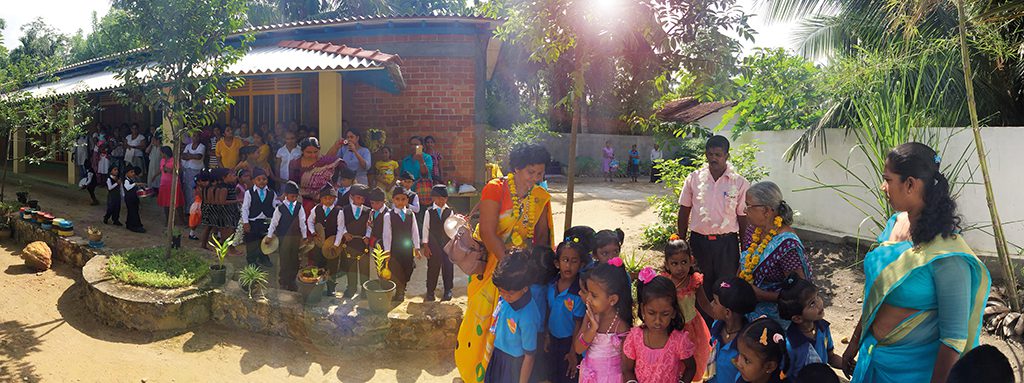
A foundation was set up to raise more funds to manage the school. Mirjam Gelink, Eugene’s personal assistant at VBAT, played an important role in this. To this day, the school, officially recognized by the local Ministry of Education, is of great importance to the village. Every year 45 new toddlers are admitted to the school and 45 children are sent on to the local primary school.
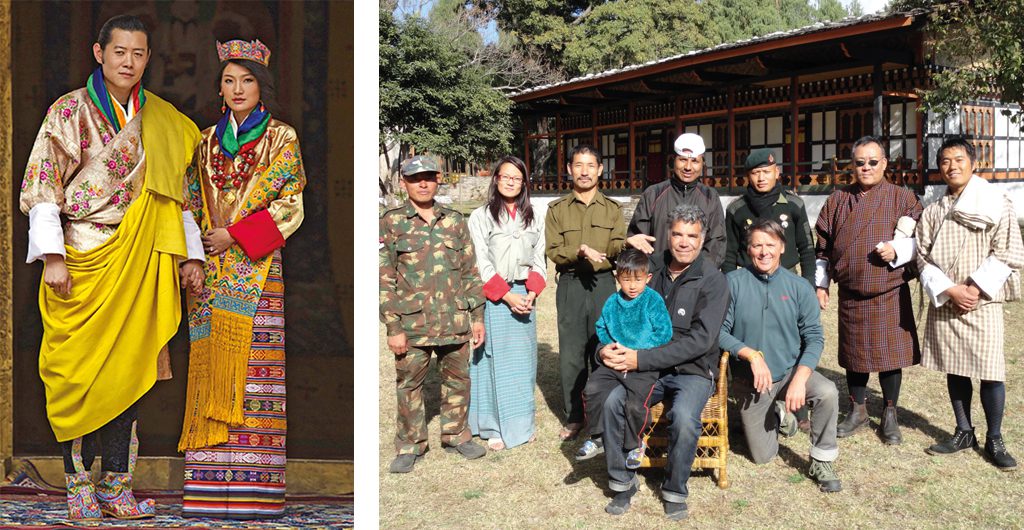
Bhutan
It is 2011. Eugene and Matthieu received an email from the court of the King of Bhutan asking if they could renovate the interiors of a number of the King’s palace villas. They did not hesitate for a moment and decided to take up the challenge.
Bhutan is a closed Buddhist kingdom south of Tibet in the Himalayas. How does an originally English, now Dutch graphic designer, come by a royal interior design assignment in one of the most isolated countries in the world? In 1999 Eugene and Matthieu were on holiday in Bali, Indonesia. They ended up in a hotel where they did not feel comfortable and wanted to leave as quickly as possible. The manager advised them of a sister hotel in Ubud, also in Bali. On arrival, they were meet by the manager, John, an American. They soon become good friends.
At the beginning of 2003, John was made manager in of the hotel group’s Bhutan operation in the capital city Thimphu. He asked Eugene and Matthieu if they wanted to take care of the interior of his private villa there. He wanted to transport the Balinese interior style to his villa in the mountains of Bhutan. This exotic house in Thimphu has since been used by many dignitaries in Bhutan as a location for meetings and gatherings. Even the King of Bhutan, or ‘HM’ (His Majesty) as Eugene calls him respectfully, regularly visits this villa. He was so enthusiastic about the interior that He sent Eugene and Matthieu the email invitation requesting their assistance in helping Him with His palace interiors.
Upon arrival in Thimphu, before the start of the project, they met two representatives of the King, who gave them a briefing. It was immediately clear that this was a difficult task for the two representatives of His Majesty. One of them was colour-blind and the second claimed not to have any feeling for interiors what so ever. Not really an ideal start. In despair, Eugene asked to speak to the client, the King.
The encounter that followed with the King and his beautiful fiancé, resulted in a friendship which continues to this day. Every year, Eugene visits the Bhutanese royal couple and other friends he has made there over the years. A number of exotic artefacts adorn Eugene and Matthieu’s home in Amsterdam – proof of their love and warm affection for Bhutan.
Time for something else
In 1984, Eugene was one of the founders of VBAT. After leading the takeover of dBOD by VBAT, he stood down in 2017 as chairman of the company.
He is described by many as a brand builder. It is no coincidence that companies like Brand Bier and Postbank (now ING) have stayed at VBAT for so long. This is partly because of the relatively large group of very talented employees that he gathered around VBAT. Eugene has always strived to push people to get the best out of themselves. That is also the reason that people always liked to stay at VBAT. For example, the agency has its own unofficial training, as regular art educations in the Netherlands do not tend to train brand builders or packaging designers. In this way, VBAT has always managed to remain relevant and up-to-date, both for clients and employees.
VBAT was a kind of family, complete with memorable Christmas celebrations at Eugene’s home – dress code black tie – which many (old) employees still talk about. Eugene has always seen the importance in building a company culture based on traditions. Developing meaningful connections and relations has been at the core of how he saw business. Financial reward follows thIs trust, it never leads.
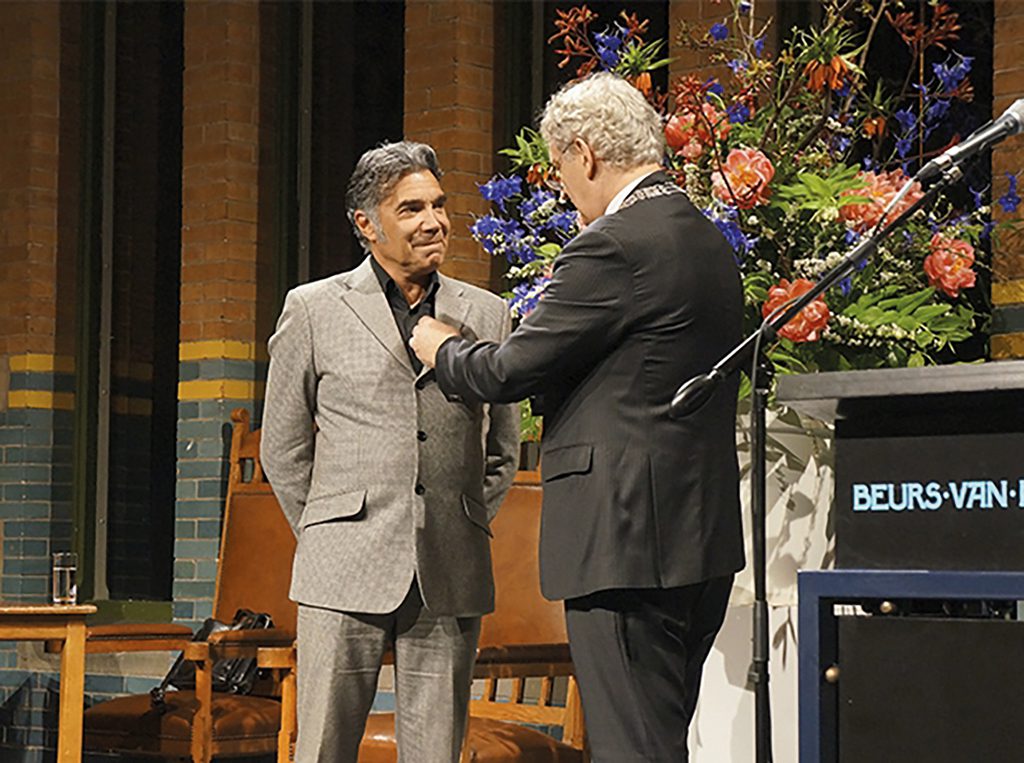
Eugene Bay
born on 21 September 1952, Istanbul (Turkey)
Author of the original text: Rob Huisman, March 2018
English translation and editing: Ton Haak
Final editing: Sybrand Zijlstra
Portrait photo: Aatjan Renders
